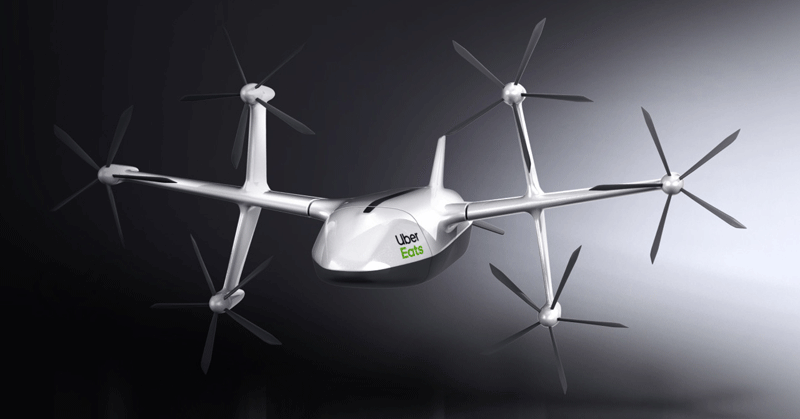Aerial drones may represent an incredible leap in foodservice technology, but there is still plenty of work to be done before we collectively get there.
Uber’s Elevate division recently painted a picture of what that future model might look like as it announced its new drone prototype.
It’s a cool drone, with six rotors that turn for more efficient distances, essentially turning a typical drone rotor 90 degrees and creating lift with a wing to save precious battery power. By doing so, the drone can fly for up to 18 miles. According to the company, that would be roughly a triangle of three six-mile distances: six miles to the restaurant to load, six miles to a staging point and six miles back to the drone facility.
The staging point is where the unique operational model comes in. Instead of flying directly to a delivery customer, finding a place to drop dinner and taking off without getting attacked by the family dog, Uber’s model still requires drivers. Those drivers, will meet the drone-bound burrito or bowl at a staging area, and drive the rest of the way to the consumer.
“We don’t need to get the drone direct to our customers or consumers,” said Uber flight operations lead, Luke Fischer, during an Elevate conference in June, as reported by TechCrunch. “We just have to get it close enough.”
It’s a fascinating blend of next-generation technology to greatly expand the range for Uber Eats restaurant partners just because of the ability to travel six miles from that restaurant in about six minutes—try doing that at rush hour anywhere. But it still relies on Uber’s core competency, its driver fleet, while attempting to make it better.
The primary gripe among rideshare drivers about the sister Eats operation is going into the restaurant, standing around or waiting in a drive-thru lane. This essentially removes that barrier and with a six-minute lead time, which can secure a driver as it leaves the restaurant so the driver and the drone can meet efficiently at the staging area.
The first flight of the drone is expected by year-end 2019, and the new drone model is expected to enter the test phase in San Diego next summer.




